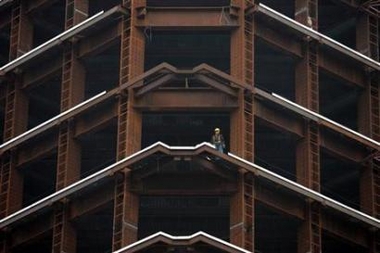China building crackdown targets "exotic" foreign designs
(Reuters)Updated: 2007-03-03 16:26
BEIJING - China is to crack down on "blindly" using foreign architects to design major public buildings as part of a drive to stifle costly architectural extravanganzas, state media reported on Saturday.
 A labourer works at a construction site of an office building in the central business district of Beijing February 28, 2007. [Reuters]  |
"In recent years, in some places there's been a fever for international tenders for major public buildings, especially landmark projects," the unnamed spokesman said, according to the Chinese government's official Web site (www.gov.cn).
"Some foreign architects are divorced from China's national conditions and single-mindedly pursue novelty, oddity and uniqueness."
China's feverish economic growth and the capital's preparations for the 2008 Olympics have underwritten a burst of spectacular but controversial buildings designed by non-local architects.
Among those under construction are the towering headquarters of China's central state television service, designed by Dutch architect Rem Koolhaas, and a National Theater in the political heart of Beijing - a science-fiction metal and glass dome conceived by Frenchman Paul Andreu.
Xinhua reported in 2004 that Koolhaas' design would cost about $750 million. These and other foreign designs have been derided by local critics for their cost and lack of traditional local flavor.
The ministry spokesman said the new rules did not block foreign designers from bidding for big projects, but they sought to add "transparency" so local designers were kept in the running.
More broadly, the regulations target officials channeling public money into "image projects" that "ignore national conditions and financial capacity," the spokesman said.
Major public buildings occupy less than 4 percent of urban built-up areas but use up 20 percent of electricity in such areas, the spokesman said. The new rules demand that selection of designs focuses on cutting energy and water bills.
|
||
|
||
|
|